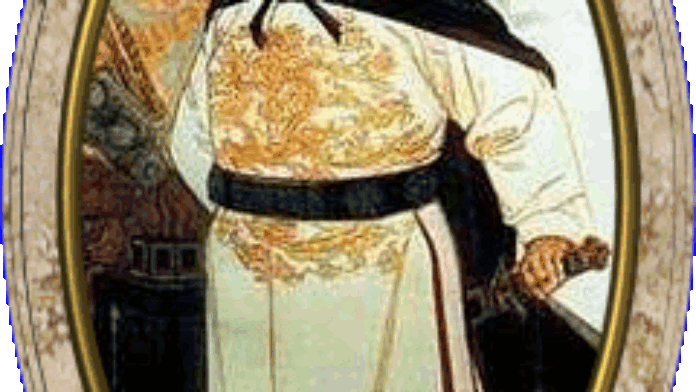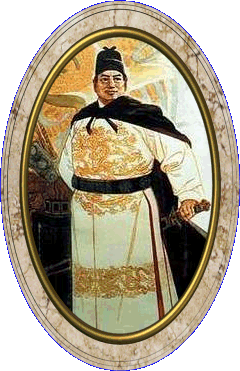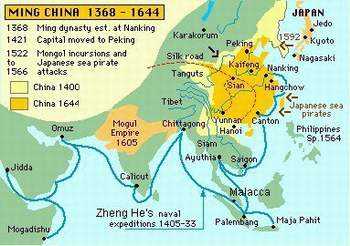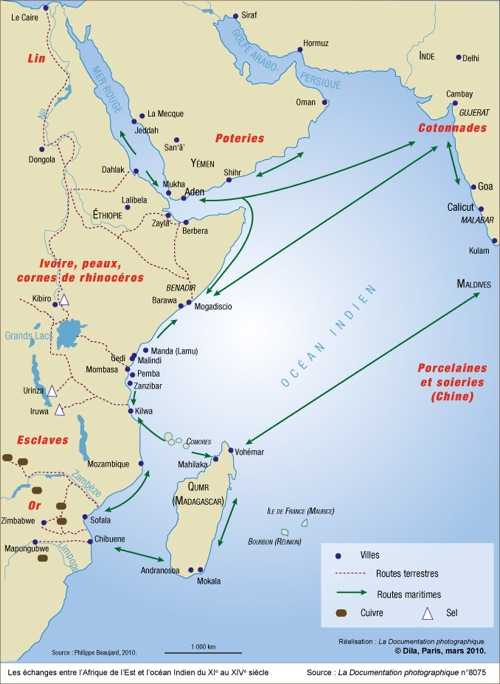
An ancient Chinese coin that dates from the 15th century, discovered on the northern coast of Kenya, reveals the existence of advanced commercial and cultural relations between China and Africa, long before the emergence of Europeans on African soil.
Despite the long held belief that China had traded with Africa before the emergence of Europeans on the African landscape, history books in both Africa and Europe have failed to highlight Chinese presence in Africa before the Portuguese. But some discoveries have the power to change the course of both history and the present day economics.
The story of a small rusted coin with a square hole in the middle will certainly rewrite the dynamics of China-Africa relations and give impetus to China-Africa trade. A team of Chinese and Kenyan archaeologists, led by Professor Qin Dashu of the Department of Archaeology at the Beijing University recently discovered a small Chinese coin dating from the fifteenth century in the northern town of Malindi, Kenya.
The presence of an inscription that reads: “Yongle Tongbao”, on the coin, corresponds to the period between 1403 and 1424. And it was all it took to set archaeologists into motion. “These coins were carried only by envoys of the emperor, Chengzu (of the Ming Dynasty),” said Professor Qin. According to Qin, the coin was most probably “a gift from the Emperor.”
 This finding is related to Zheng He’s epic journeys. This Hui (Chinese Muslim) eunuch from Yunnan, appointed Admiral of the Imperial fleet by Emperor Zhu Di (Yong Le), of the Ming Dynasty, and commander of an impressive fleet of over 200 boats, is believed to have crossed the Indian Ocean in 1418 and traveled along the East Coast of Africa where he traded with the men in Tanzania, Kenya, Somalia. Considered as the first great modern maritime explorer, he led two great expeditions to the African coast in 1417-1419 and 1431-1433.
This finding is related to Zheng He’s epic journeys. This Hui (Chinese Muslim) eunuch from Yunnan, appointed Admiral of the Imperial fleet by Emperor Zhu Di (Yong Le), of the Ming Dynasty, and commander of an impressive fleet of over 200 boats, is believed to have crossed the Indian Ocean in 1418 and traveled along the East Coast of Africa where he traded with the men in Tanzania, Kenya, Somalia. Considered as the first great modern maritime explorer, he led two great expeditions to the African coast in 1417-1419 and 1431-1433.
But this is not the first discovery report of Chinese presence in Africa before Portuguese merchants. A few years ago, still in Kenya, a group of fishermen in the town of Lamu picked up a 15th century Chinese vase in their nets. According to the story, one of Zheng’s fleet was wrecked after an unfortunate encounter with a destructive storm. The survivors landed on the coast of Kenya and lived with the local people. Some, it is believed, got married to local women. In fact, recent DNA tests have confirmed the claims of certain fishermen to have Chinese ancestors.
 The Kenyan coast is home to some of the finest archaeological sites in East Africa and reflects a society that draws its source from a culture of maritime trade across the Indian Ocean, and particularly with China. Commercial activities in the Indian Ocean intensified under the Song dynasty (from the twelfth century) and peaked under the Ming dynasty. Trade between the two continents was vital to the development of cultural ties between China and Africa.
The Kenyan coast is home to some of the finest archaeological sites in East Africa and reflects a society that draws its source from a culture of maritime trade across the Indian Ocean, and particularly with China. Commercial activities in the Indian Ocean intensified under the Song dynasty (from the twelfth century) and peaked under the Ming dynasty. Trade between the two continents was vital to the development of cultural ties between China and Africa.
In 1414, an emissary from the town of Malindi, in modern day Kenya, paid a visit to the Chinese royal court. Ancient Chinese texts also testify that emperor Zheng once visited the Sultan of Malindi, the most powerful ruler on the Kenyan coast at the time.
 Chinese ceramics and coins have also been found in the ruins of The Great Zimbabwe civilization, an ampliative indication of the commercial relations that once existed between Eastern and Southern Africa and the Chinese empire.
Chinese ceramics and coins have also been found in the ruins of The Great Zimbabwe civilization, an ampliative indication of the commercial relations that once existed between Eastern and Southern Africa and the Chinese empire.
These commercial and cultural relations, however, screeched to an unfortunate halt upon the demise of Admiral Zhen in 1433, after which China abandoned its maritime ambitions, leaving Africa to the Portuguese. China-Africa relations was revived in the second half of the nineteenth century.

